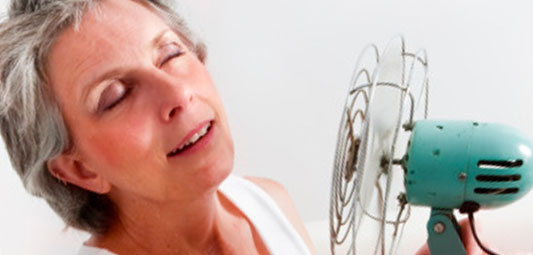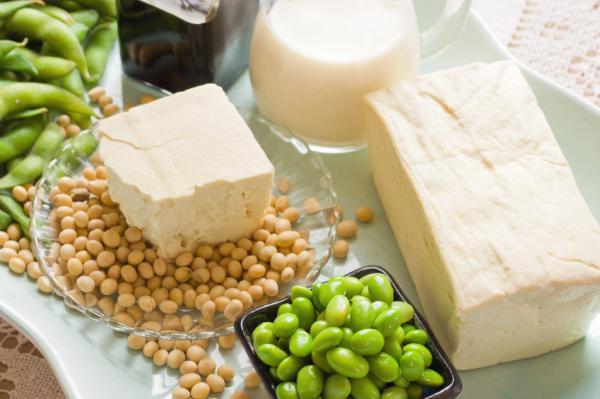
If 50 is the new 40 and 40 is the new 20, then Peri-menopause seems to be the new PMS. It’s very common and effects women between the ages of 35 to 50 generally and we are seeing it starting to happen on a more frequent basis and in younger women.
During the years before menopause levels of progesterone typically decline, while oestrogen levels remain stable or even increase. This creates a situation commonly referred to as oestrogen dominance as the ratio of progesterone to oestrogen changes and triggers the following symptoms. Some of the symptoms that women suffer when progesterone declines include:
- Weight gain
- Increased PMS
- Breast swelling and tenderness
- Mood swings
- Poor memory
- Irritability
- Poor sleep
- Water retention
- Aches and pains
- Heavy periods
- Fibroid growth
Another hormone which is influenced is Testosterone. Testosterone levels may start to decline during this phase and can be quite difficult to observe. These symptoms can be:
- Reduced Sex Drive
- Reduced response to sex
- General sense of well-being, energy, and ambition
- Depression
- Reduction in muscle mass
If 50 is the new 40 and 40 is the new 20, then the peri-menopause seems to be the new PMS.
The final piece to the puzzle is the reduction in oestrogen levels leading into menopause. The ovaries reduce production of oestrogen which triggers the elevation of Follicle stimulating hormones and luteinising hormone (LH) which triggers the characteristic symptoms of menopause. The ovaries continue to produce some oestrogen along with the adrenal glands however if the drop is dramatic and the adrenals cannot cope then symptoms can be dramatic until the body balances itself.
- Hot flushes
- Reduced energy
- Night sweats
- Vaginal dryness
- Depression
- Mood swings
- Dizziness
- Headaches
- Memory Loss
- Urinary incontinence
- Arthritic aches and pains
So it is critically important that from the age of 35 to 50, women are aware of the changes starting to occur and support the endocrine control centres during this phase to avoid these symptoms and ensure a healthy menopause. If these symptoms are suppressed with hormonal treatments, or ignored then the underlying attempt of the body to try and manage this transition naturally is sabotaged it leads to a range of other issues such as:
- Weight gain
- Thyroid reduction
- Skin breakouts
- Mood swings
- Depression
- Irritability
- Insomnia
- Premature ageing
- Premature menopause
The herbal approach is to consider a range of herbs that tackle the problems on a more symptomatic level as well as a combination of practical suggestions or possibly even some of the talking therapies, particularly if the menopause occurs at an early age. Herbs that will control the hot flushes include sage and black cohosh. Herbs that control mood include:
- St. John’s Wort and other nervines such as skullcap, wood betony and damiana.
- Herbs for anxiety and insomnia include Indian ginseng, passion flower, lime flowers and Jamaica dogwood.
- Herbs that balance the reproductive hormones include false unicorn root, licorice, red clover or wild yam.
A herbalist would prescribe the most suitable combination of herbs for each case so a consultation is strongly recommended (see http://thecpp.uk/ for how to locate your nearest herbalist).

Diet is absolutely crucial so ensuring a well-balanced diet is critical to health at this stage. Getting the right balance of vitamins and minerals is important as well as slow-release energy-rich complex carbohydrates.
Much has been debated about soya and some of this information is confusing simply because some of it is contradictory and poorly referenced from non-reputable sources. Soya is one of the products that come under the general category of plant nutrients called phyto-oestrogens because when consumed, they exert an effect similar to the hormone oestrogen, although its action is weak. The table below gives further examples of other sources of plant oestrogens. In short, it is the fermented soya that is beneficial to health (whatever age but more so during the menopause). Fermented soya and their products such as miso, tempeh, tamari and shoyu are good examples. These reflect what is traditionally consumed in the Far East where menopause is a rare occurrence. Products such as soya milk, tofu (bean curd) and soya protein isolates are a Western invention and many argue that some of the health problems are attributed to the consumption of these products rather than the original soya preparation which are fermented. A consultation with either a clinical nutritionist or a medical herbalist is strongly recommended for comprehensive advice and guidance on this. Nutritional and lifestyle recommendation post-menopause is also advised such as preventing heart disease and osteoporosis.

Phytooestrogens
Over the last few years, there has been great interest in the role of naturally-occurring plant constituents that have a weak hormonal action in the body. These are collectively referred to as phyto-oestrogens (PO) of which there are 6 main types consumed by humans. POs occur widely throughout the plant world and can have a profound influence on human health particularly in oestrogen-deficient states such as the menopause. All types are naturally-occurring compounds and can be found in grains, seeds, legumes and medicinal plants in addition to other vegetable sources.
Classification of phyto-oestrogens; edible plants with recognised oestrogenically-active compounds:
PHYTO-OESTROGEN
|
COMMON SOURCES
|
|
Isoflavonoids
·
main ones =
genistein & daidzein
·
glycitein in smaller
quantities
|
·
alfalfa
·
licorice*
·
mung beans
·
whole grains
·
red clover
·
soya*
|
|
Lignans
|
·
linseed (flax)*
·
rye
·
legumes
·
beans
·
wholegrains
|
|
Saponins (similar structure to steroidal hormone
oestrogen, progesterone & androgens. Some pharmaceutical companies use
saponin-containing plants to manufacture steroid hormones)
·
many medicinal
herbs in this category
·
pharmacological
mechanisms may involve interaction with hypothalamus-pituitary hormones ra
|
·
black cohosh – Cimicifuga racemosa
·
licorice* - Glycyrrhiza glabra
·
Korean ginseng
– Panax ginseng
·
wild yam – Dioscorea villosa
·
fenugreek – Trigonella foenum-graecum
·
root vegetables
·
grains
|
|
Coumestans
|
·
alfalfa
·
soya sprouts*
·
green beans
·
kidney beans
|
|
Resorcylic Acid Lactones
|
·
oats
·
barley
·
rye
|
|
O
|
·
fennel – Foeniculum vulgare
·
cabbage family
·
sage – Salvia officinalis
·
garlic – Allium sativum
|
On a more holistic level, there are 3 simple steps to treating Perimenopause naturally:
Diet and lifestyle.
Eating a low processed, alkaline and high antioxidant diet is important to allow the bodies detox and elimination systems to work efficiently. One of the reasons why oestrogen increases is because the body lacks the ability to metabolise oestrogen in particular. So it requires optimal liver and digestive function. If liver function is sluggish then many of these symptoms develop so we suggest taking an additional liver support supplement containing natural amino acids and herbal medicines. For digestion it is important to take fermented drinks and vegetables to build up the GUTs natural balance and defences. These bacteria assist in the breakdown of hormones excreted by the liver. Our 8 week program has recipes for these drinks.

Manage stress levels
Stress is a common issue with women at this stage of life with busy lives, running households and careers to manage. Often women take care of themselves last and stress impacts on the endocrine balance. The adrenals become exhausted and cannot take up the additional production of oestrogen leading into menopause and the result is the dramatic symptoms of menopause. So managing stress is critical. Ensuring adequate sleep, regular exercise, yoga and meditation are all really important to ensure stress levels are kept to a manageable level.

Balance the hormone control centre
We know hormones are starting to shift at this time of life towards menopause. It largely depends on how well your body copes with this process. Your hormonal control centre, the pituitary and hypothalamus axis is the centre which regulates your hormones. What we find is often diet and lifestyle sometimes are just not enough to correct the underlying imbalance. This is where some key herbal medicines come into play. Sage, vitex (agnus castus) and black cohosh when combined together have a unique synergistic effect that nothing else can achieve. A combination of these herbs will works directly on this control centre to allow the body to balance its own hormone levels naturally. And lets not forget this is a natural process. You should not have any symptoms. Women living traditional lifestyle and eating traditional foods such as those in Japan don’t experience menopausal or peri-menopausal symptoms. So it’s very much a western condition and we need to rely on natural medicines to allow the body to control its own hormone levels.
The current approach to treating perimenopause is to replace any deficient hormones, namely progesterone, testosterone or DHEA – another hormone which is reduced. You can read my specific post on DHEA here: http://yaso-shan.blogspot.co.uk/2016/08/anti-ageing-properties-of-dhea.html
Although there may be initial relief, the problem with this approach is three-fold.
First is when you provide the body with an external hormone, it immediately reduces its own natural production. So when menopause rolls around, the situation is only compounded.
Second is the oestrogen levels stay elevated. This does not treat the issues of oestrogen dominance and the prolonged elevation of oestrogen is not good for the body on many levels relating to cancers.
And lastly,the supplementation of hormones confuses the endocrine system leading to the body lacking the ability to control hormone levels resulting in further hormonal imbalance. It’s a slippery slope once you get onto it. However there are effective natural options that can help you to regain your health and restore a natural sense of calm and balance.
Extracts from Modern Living, Holistic Health & Herbal Medicine (2011) by Yaso Shan. Published by Booklocker Inc USA. http://www.amazon.co.uk/Modern-Living-Holistic-Health-Medicine/dp/1609106393
No comments:
Post a Comment